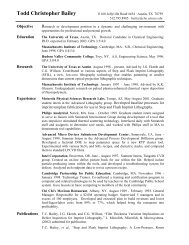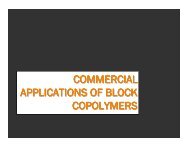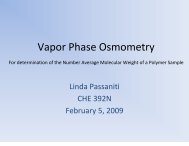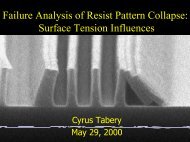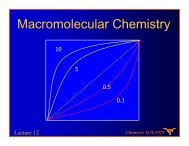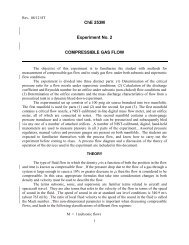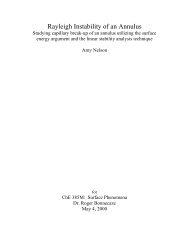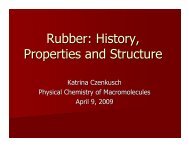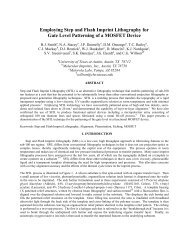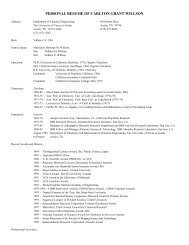Asymmetric fluid-structure dynamics in nanoscale imprint lithography
Asymmetric fluid-structure dynamics in nanoscale imprint lithography
Asymmetric fluid-structure dynamics in nanoscale imprint lithography
- No tags were found...
Create successful ePaper yourself
Turn your PDF publications into a flip-book with our unique Google optimized e-Paper software.
200018001600base layer thickness, nm14001200100080060040020000 0.05 0.1 0.15 0.2 0.25 0.3 0.35 0.4 0.45 0.5time, sFigure 5.7 Base layer thickness correspond<strong>in</strong>g to s<strong>in</strong>gle s-curve actuationThe results from the simulation show that this system has very highdamp<strong>in</strong>g due to the etch barrier <strong>fluid</strong> as expected. With this type of actuation, thef<strong>in</strong>al base layer thickness at 0.5 seconds was approximately 440 nm while theimpr<strong>in</strong>t<strong>in</strong>g force was nearly 25 lbs. However, the force is not significant until thelatter half of the simulation time <strong>in</strong>terval. The end result is that very th<strong>in</strong> baselayers are not easily achieved with low actuation forces.A base layer of this thickness cannot be properly etched. However, toachieve th<strong>in</strong>ner base layers with s<strong>in</strong>gle s-curve position control, the actuationforce would be significantly larger s<strong>in</strong>ce the force scales as 1h3 . In thefollow<strong>in</strong>g section, an improved method of actuation is proposed that results <strong>in</strong>th<strong>in</strong>ner base layers.71



